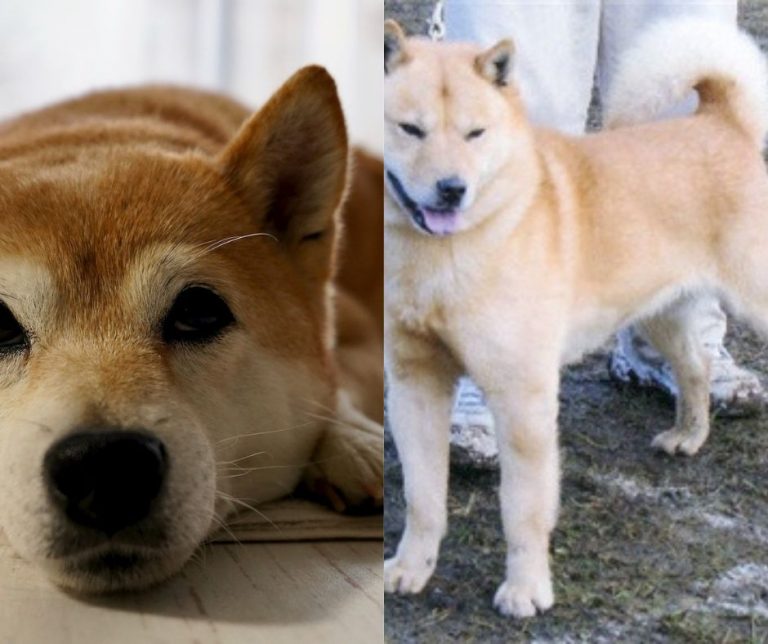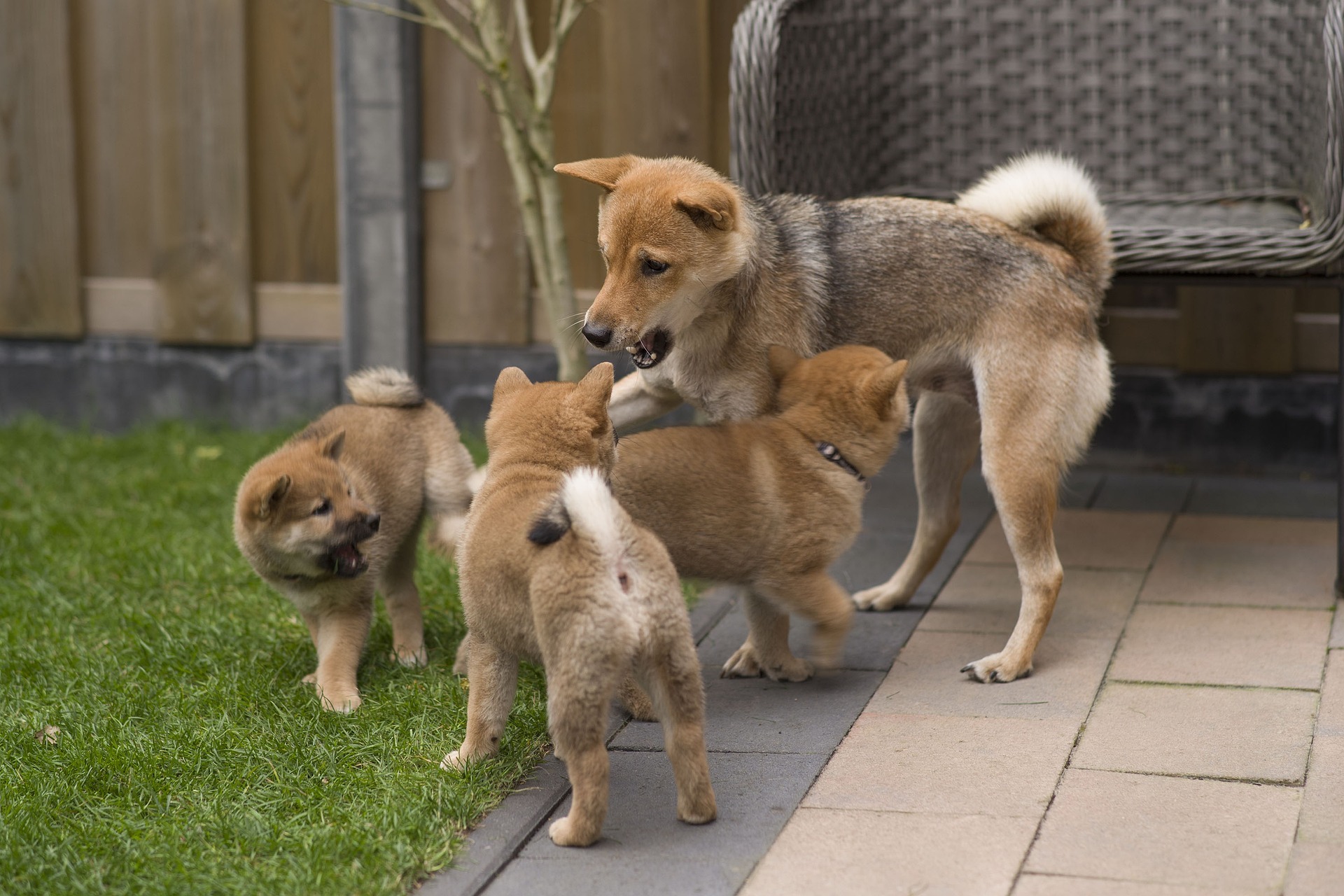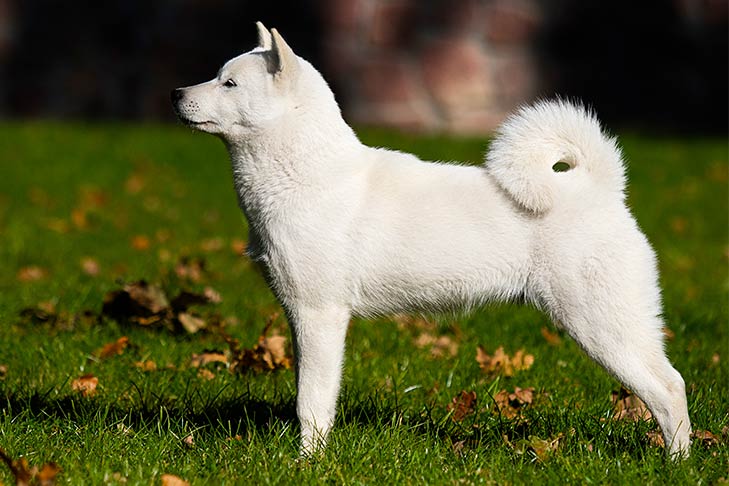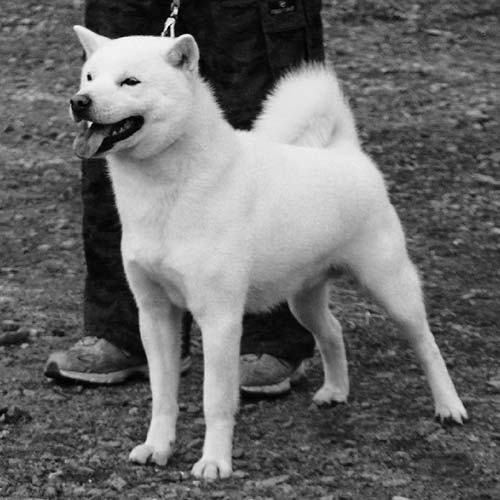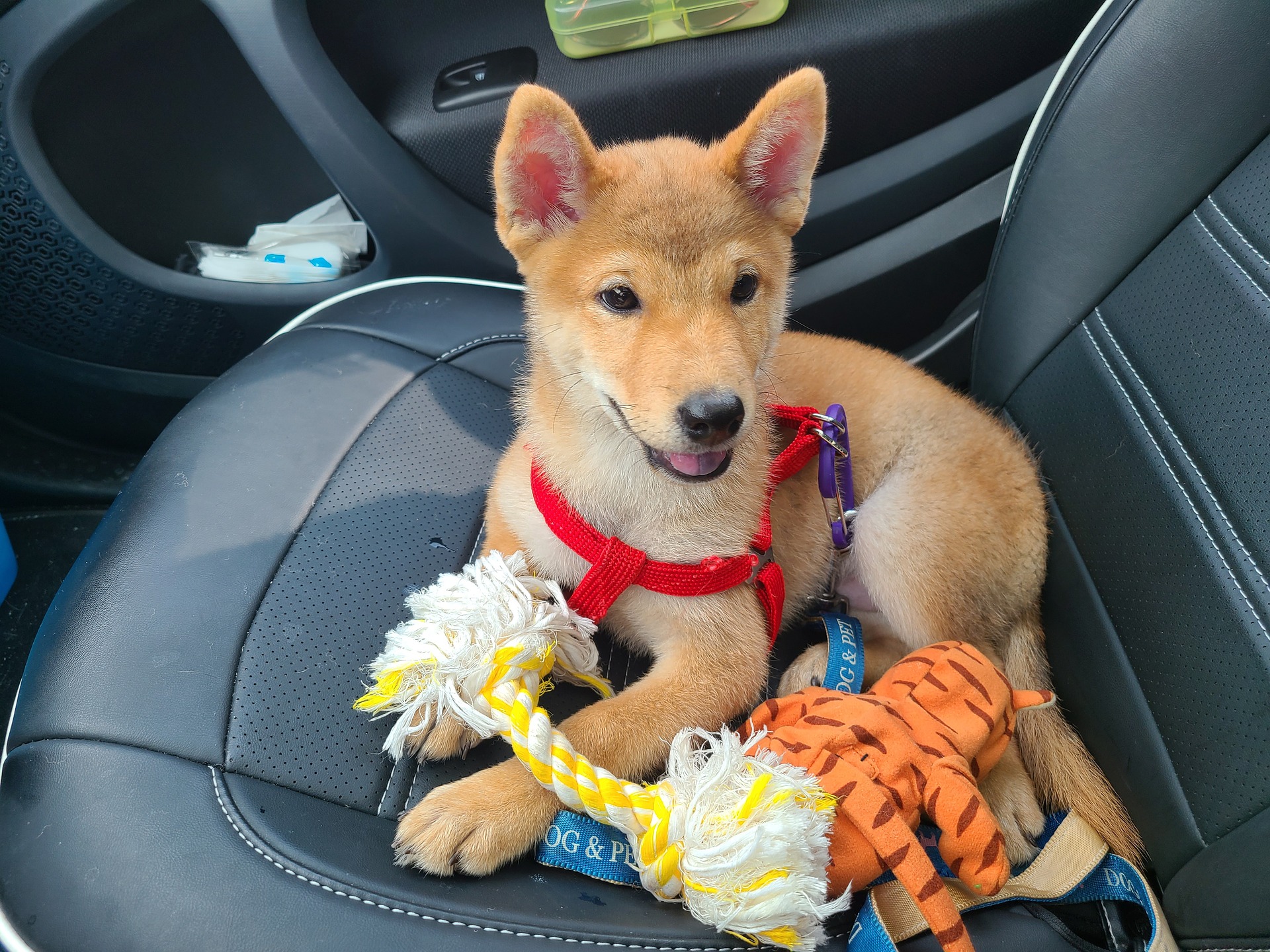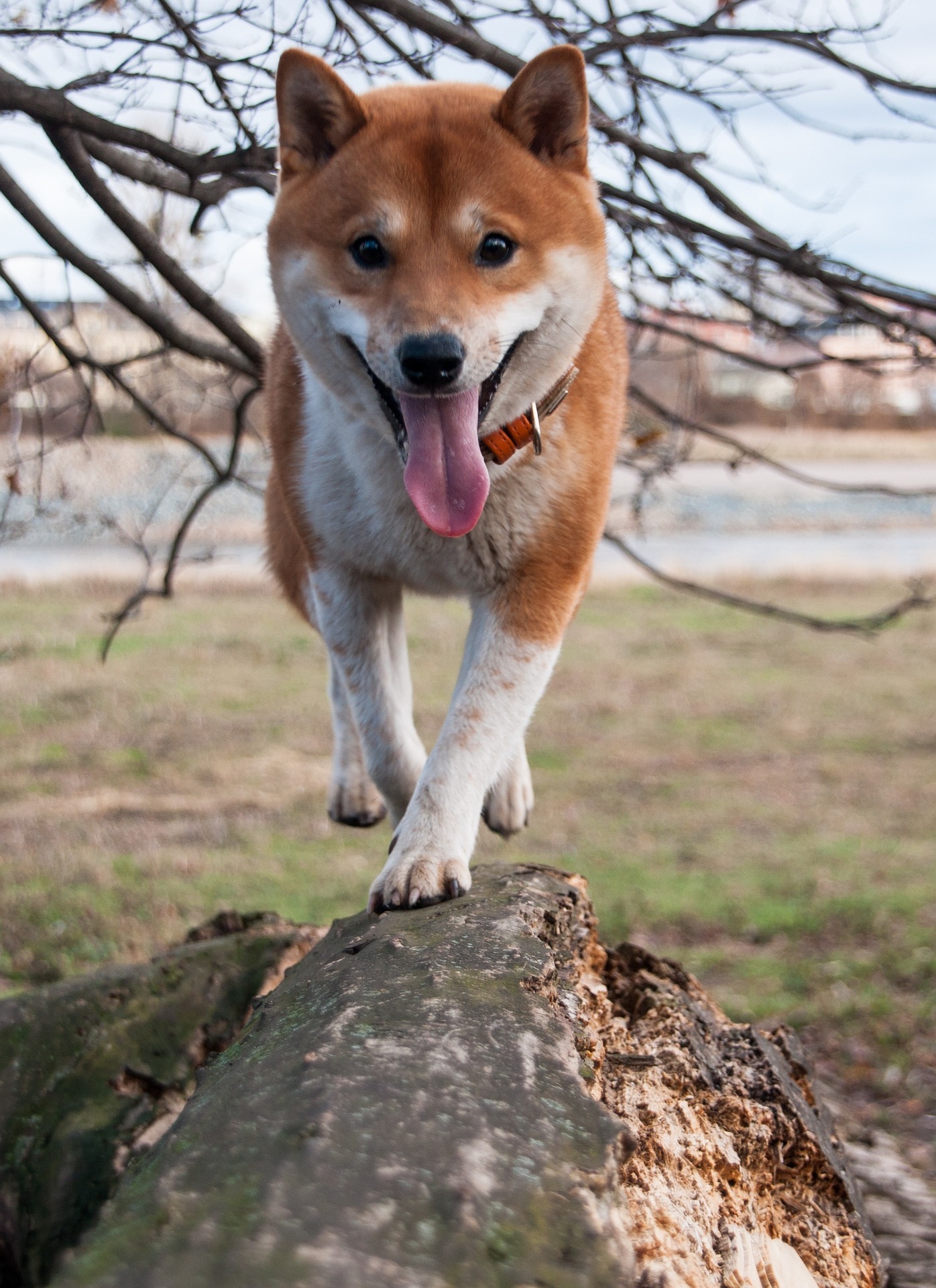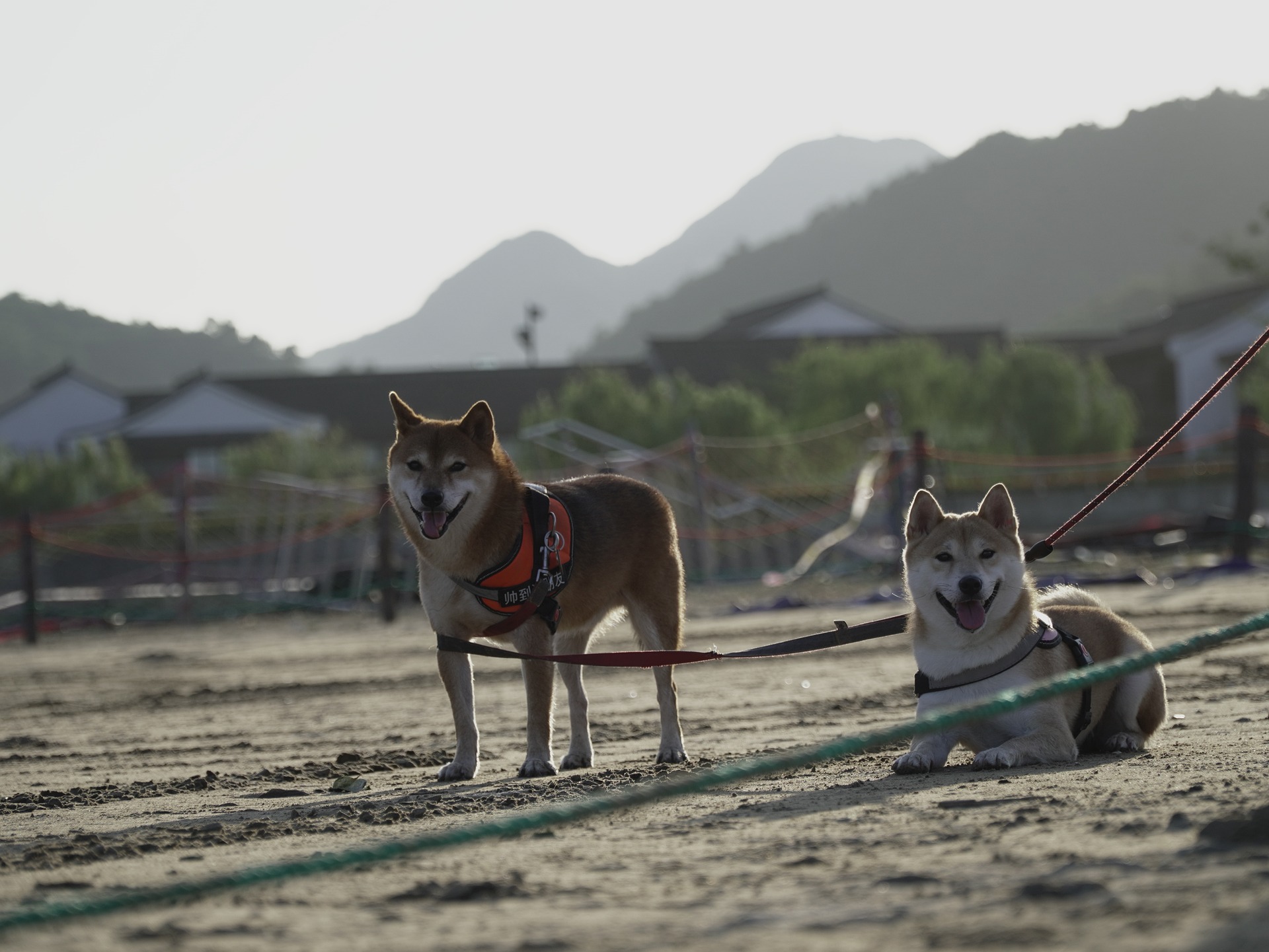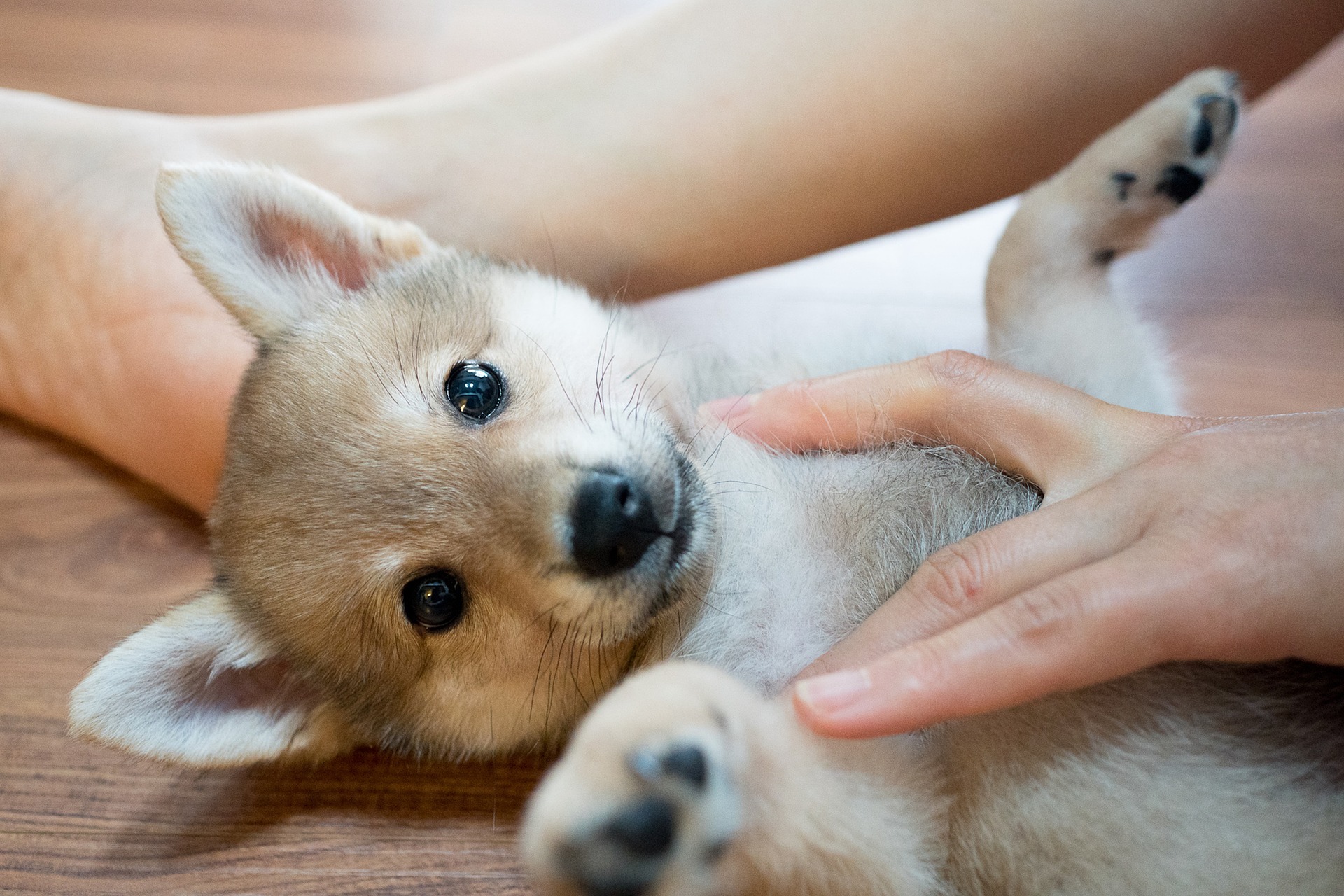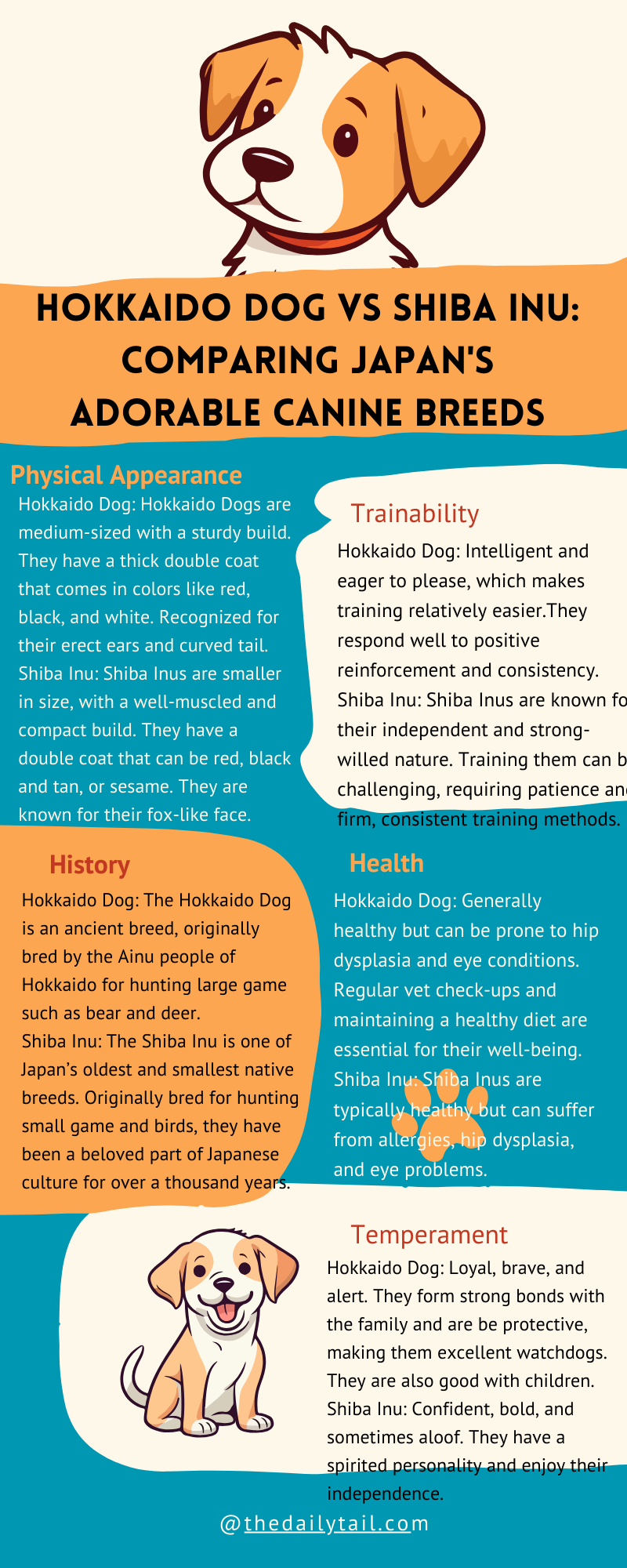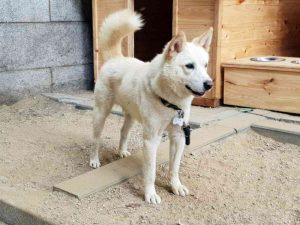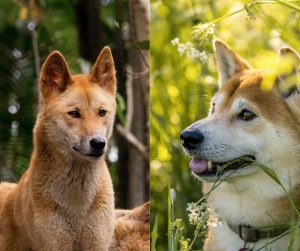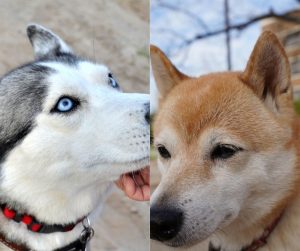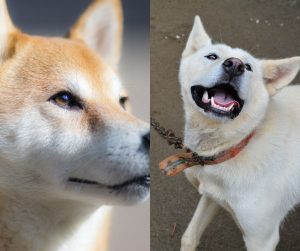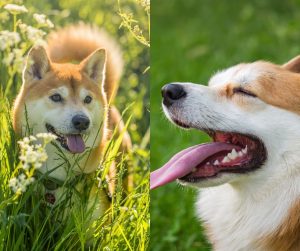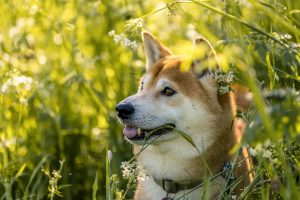When exploring the various breeds of dogs, the Hokkaido Dog and the Shiba Inu present fascinating options. Both hail from Japan, carry a rich heritage, and possess unique traits.
Despite their shared origins, the two breeds exhibit remarkable differences that prospective owners should consider. The Hokkaido Dog, sometimes known as the Ainu Dog, is revered for its strength and loyalty. It is particularly suited for harsh climates and outdoor activity. On the other hand, the Shiba Inu, one of Japan’s smallest native breeds, is known for its foxy appearance, agility, and spirited personality.
Distinguishing between the Hokkaido Dog and the Shiba Inu goes beyond appearance. They have differing temperaments and care requirements that fit different lifestyles.
For instance, Shibas often display an independent streak, which poses unique challenges in dog training. Meanwhile, Hokkaido Dogs typically show a stronger inclination to follow commands and are known for their problem-solving skills.
Further, the differences extend to their health profiles and the type of living environment they thrive in. These are essential considerations for anyone deciding between the two breeds. So, let’s take a deeper look into the Hokkaido Dog vs Shiba Inu dog breed comparison.
Key Takeaways
- Hokkaido Dogs are loyal and robust, ideally suited for outdoor living, while Shiba Inus are smaller, agile, and independent.
- Training a Hokkaido Dog may be more straightforward, whereas Shiba Inus may require more patience due to their independent nature.
- Prospective owners should consider each breed’s unique health, care, and living environment needs before making a choice.
Breed Origin and History
Exploring the origins of the Hokkaido dog and Shiba Inu is like taking a step back into Japan’s rich history. Both breeds boast a deep-rooted past on the islands of Japan, deeply intertwined with the culture and people. They are recognized by the American Kennel Club, but also by the Japan Kennel Club. We can say they are native Japanese dog breeds.
Hokkaido Dog Ancestry
The Hokkaido dog, also known as Ainu-ken, traces its origins to the Ainu people of Hokkaido. These dogs are revered for their loyalty and their formidable ability to withstand the cold climate of northern Japan.
Used traditionally for hunting and guarding, the Hokkaido dog is believed to be one of the oldest and purest dog breeds in Japan, with a history that spans several centuries.
- Region of Origin: Hokkaido, Japan
- Traditional Roles: Hunting partner, guardian
- Recognition: Protected species in Japan
Shiba Inu Lineage
On the other paw, the Shiba Inu, Japan’s smallest native breed, has a lineage that dates back to the Jomon period. These vivacious dogs were originally bred for hunting in the dense underbrush of Japan’s mountainous regions. Shiba Inus are admired for their agile, fox-like appearance and have maintained their status as a favorite companion in Japan throughout their storied history.
- Epoch of Origin: Jomon period (14,500 BC)
- Original Purpose: Small game hunting
- Feature: Fox-like appearance and agile nature
In Japan, the Shiba Inu enjoys the same reputation and respect as its bigger cousin, the Japanese Akita Inu dog breed.
Hokkaido Dog vs Shiba Inu Physical Characteristics
When comparing the Hokkaido Inu to the Shiba Inu Japanese dog breeds, one can’t help but notice the distinctive traits that make each breed unique. The striking differences in size and coat offer enthusiasts and pet owners alike much to admire about these two beloved Japanese breeds. We have to say that despite their origin in Japan, these two are recognized by the American Kennel Club.
Size and Build
Shiba Inu
- Size: Small to medium-sized, typically reaching heights up to 16.5 inches
- Build: Compact with well-developed muscles, sporting a bushy tail that curls over the back
Hokkaido Dog
- Size: Medium-sized breed, standing slightly taller than the Shiba Inu, with males reaching up to 20 inches in height
- Build: Known for a muscular build that reflects their agility and strength, the Hokkaido dog also features a comparably bushy tail
Coat and Colors
Shiba Inu
- Coat: Possesses a thick double coat that provides insulation; the outer layer is stiffer and straight
- Colors: Comes in a variety of colors including red, black and tan, sesame (black-tipped hairs on a rich red background), and cream
Hokkaido Dog
- Coat: Sports a thick double coat similar to the Shiba Inu, designed to protect against harsh weather
- Colors: Their coat presents in multiple colors such as sesame, brindle, black, red, and white, showcasing a vibrant and diverse palette
Hokkaido Dog vs Shiba Inu Personality and Temperament
When choosing between the Hokkaido Dog and the Shiba Inu, one quickly realizes that personality and temperament are significant factors. These two breeds showcase a variety of traits that cater to different preferences in pet ownership. These two native Japanese dog breeds are deeply rooted in Japanese culture.
Hokkaido Dog Traits
The Hokkaido Dog is known for its loyalty and protective instincts, making it an excellent guardian for the family. Their intelligence is paired with a calm disposition, which reflects their ability to assess situations rather than reacting impulsively.
As independent thinkers, they can be strong-willed at times, which necessitates a consistent and patient training approach. This breed is typically alert and has a notable prey drive, so early socialization is critical to help them become well-adjusted.
- Intelligence: High, learns quickly
- Temperament: Calm but alert, reserved with strangers
- Loyalty: Deeply loyal to their family
- Prey Drive: Notable; early socialization recommended
Shiba Inu Disposition
In contrast, the Shiba Inu boasts an outgoing and spirited personality that exudes confidence. They are playful and known for their bold expressions of affection.
While they share the independent nature of the Hokkaido Dog, they are often more receptive to training. Shiba Inus can be incredibly confident companions, displaying both a curious inclination and a mind of their own.
Bearing a slightly strong-willed nature, this breed benefits greatly from consistent training to direct their spirited energy positively.
- Playful and Spirited: Enjoys interactive play which fosters their playful side
- Confidence: Marks them as bold and self-assured pets
- Independent Nature: Can be headstrong, which requires diligent training
- Outgoing: Friendly and confident around familiar faces
Health and Lifespan
When considering a furry companion, it’s essential to understand the health and longevity one might expect. Both the Hokkaido dog and Shiba Inu boast robust health profiles but do face some breed-specific challenges.
Common Health Concerns
Hokkaido dogs and Shiba Inus share similar genetic predispositions regarding health. Owners should be mindful of hip dysplasia, a condition affecting the hip joint, leading to pain and mobility issues.
Both breeds might experience allergies, which can manifest as skin irritations. Eye conditions like glaucoma are also a concern, potentially leading to vision loss if not treated promptly.
- Hip Dysplasia
- Signs include lameness or stiffness.
- Screen Allergies
- Watch for itching, redness, or discomfort.
- Glaucoma
- Symptoms such as eye pain, cloudiness, or redness should prompt a visit to the vet.
Maximizing Vitality
A proactive approach to health can significantly increase both quality of life and life expectancy. Regular veterinarian check-ups are crucial to spot early signs of potential health problems.
A balanced diet tailored to their needs, ample exercise, and mental stimulation contribute to both breeds’ wellbeing.
- Veterinarian Check-ups
- Regular check-ups can catch health issues early.
- Balanced Diet & Exercise
- These are key to preventing obesity, a risk factor for many health conditions.
Both breeds have known risks for certain cancers, so understanding and remaining vigilant about these health concerns can help in early detection.
Genetics play a role in the appearance of some health problems, so it’s imperative to understand the medical history of your pet’s lineage where possible.
Care Requirements
When bringing a Hokkaido dog or Shiba Inu into your home, understanding their care requirements is vital for their well-being. Each breed has its unique needs regarding diet, exercise, and grooming.
Dietary Needs
Both breeds require a balanced diet to maintain their health and energy levels.
Hokkaido dogs, being larger, may need more food compared to the Shiba Inu. A diet rich in protein is crucial for both, fueling their active lifestyle.
It’s important to monitor portions and adjust as needed to prevent obesity.
- Hokkaido Dog: High-quality dry food, 2-3 cups daily split between meals
- Shiba Inu: High-quality dry food, 1-1.5 cups daily split between meals
Exercise Demands
Regular exercise keeps these dogs physically fit and mentally stimulated. Hokkaido dogs are robust and may require more prolonged physical activity. Meanwhile, Shiba Inus, although energetic, can be prone to separation anxiety.
Shiba Inus may benefit from both physical exercises and interactive playtime to keep their minds occupied.
- Hokkaido Dog:
- Daily walks, at least 45-60 minutes
- Activities like hiking and fetching
- Shiba Inu:
- Daily walks, at least 30-45 minutes
- Puzzle toys to keep them engaged when alone
Grooming Essentials
Neither breed is hypoallergenic, and both shed seasonally. Regular brushing is essential to manage shedding and maintain their coat’s health. A Shiba Inu typically requires less grooming than a Hokkaido dog due to the latter’s thicker double coat.
- Hokkaido Dog:
- Brushing: 2-3 times a week, more during shedding seasons
- Bathing: Every few months or as needed
- Shiba Inu:
- Brushing: Once a week, more during shedding seasons
- Bathing: Less frequently, only when dirty
Proper grooming keeps their coats clean and minimizes the presence of loose fur around the house. It also provides a great opportunity to bond with your furry friend.
Hokkaido Dog vs Shiba Inu Training and Socialization
When it comes to training and socialization, both Hokkaido dogs and Shiba Inus bring their own unique set of characteristics. They both have a notable intelligence and an independent streak, yet their loyalty adds a layer of complexity to their trainability.
Behavioral Training
Hokkaido dogs are independent by nature and possess strong loyalty. This can translate to a requirement for firm, consistent behavioral dog training that leans on positive reinforcement. They appreciate mental stimulation and challenges that keep their minds active.
On the other hand, Shiba Inus often exhibit a spirited agility that can be channeled through training tasks that cater to their quick reflexes and lithe movements.
- Training Tips for Hokkaido Dogs:
- Start with basic commands early on to establish leadership
- Incorporate games that stimulate their hunting instincts in a controlled manner
- Training Tips for Shiba Inus:
- Agility training can be particularly effective, utilizing their natural athleticism
- Positive reinforcement methods work well with Shiba Inus, given their outgoing nature
Interacting with Others
Socialization is vital for both breeds to cultivate their ability to interact with others. Hokkaido dogs, with their reserved temperament towards strangers, require early socialization to foster a friendly attitude.
Meanwhile, Shiba Inus, typically outgoing and friendly, can be easier to socialize but benefit from regular interaction to maintain their sociable nature.
- Socialization Tips for Hokkaido Dogs:
- Introduce them to a variety of people, places, and situations gradually
- Provide them with plenty of reassurance and rewards to associate social encounters positively
- Socialization Tips for Shiba Inus:
- Regular playdates with other dogs can be beneficial
- Exposure to different environments can help them adapt to various social settings
Living with a Hokkaido Dog or Shiba Inu
Choosing between a Hokkaido Dog and a Shiba Inu for your home is more than just picking a pet; it’s inviting a new member into your family. Each breed offers unique qualities that can blend seamlessly into various home environments. In Japanese culture, these two are highly prestigious dogs. There are other Japanese dogs like the Kai Ken, Japanese terrier, Japanese Spitz, Japanese Chin, and more. But today, we look at Hokkaido Inu vs Shiba Inu comparison.
Family and Home Environment
Hokkaido Dogs are known for their loyal nature, making them excellent companions for families. They are generally good with children, often showing a protective and caring side.
This Japanese breed adapts well to living indoors and can thrive in a home environment where they feel part of the family unit. However, they require regular exercise to keep them fit and prevent boredom.
Shiba Inus, while also forming strong bonds with their families, can exhibit a more independent personality.
They are suited for both novice owners and those experienced with dogs, thanks to their manageable size and adaptable nature. Shiba Inus may not always engage in lots of cuddles, but they’ll stick close to their owners, showing their version of companionship.
Compatibility with Other Pets
When introducing a Hokkaido Dog or Shiba Inu to a home with other pets, different approaches are necessary due to their distinctive temperaments.
- Hokkaido Dogs: More robust and larger than Shiba Inus, they can be socialized to coexist peacefully with other pets. Early, consistent training helps foster a pets-friendly atmosphere
- Shiba Inus: Smaller in stature and with a strong personality, Shiba Inu dogs may require careful introduction and socialization with other pets, especially smaller ones, to ensure harmony in the home
In both cases, owners should monitor interactions carefully to ensure each pet feels safe and secure. Neither breed is primarily known for guarding, but they may alert the family to unusual activities or strangers, adding an extra sense of security to the household.
Choosing Between Hokkaido Dog and Shiba Inu
When torn between the Hokkaido Dog and the Shiba Inu, it’s helpful to consider factors such as energy level, independence, and size. They both have distinct traits that suit different home environments and lifestyles.
Understanding Your Lifestyle
One’s daily routine and home life are crucial in selecting the right companion.
The Hokkaido Dog is recognised for a higher energy level and an innate ability to guard, making them excellent for active families or individuals who appreciate outdoor activities and want a watchful companion.
On the other hand, Shiba Inus are known for their independence and may match well with those who prefer a less demanding presence. Moreover, Shiba Inus are smaller in size, which might appeal to those living in apartments.
In terms of loyalty, both breeds show devotion to their families. However, their expressions of loyalty can be different; Shiba Inus might display it with a more independent attitude, while Hokkaido Dogs often exhibit a more overt protective nature.
Costs and Commitment
Budget considerations extend beyond the initial price tag. Here’s a simple breakdown to illustrate this:
- Price: Generally, Shiba Inus can be less expensive compared to Hokkaido Dogs
- Maintenance costs: Include food, grooming, and veterinary care
- Breeding: Some bloodlines or rare colors, including white, can be pricier
They both typically share similar lifespans, and ongoing expenses for either breed include food, grooming, and health care.
One should remember that while the larger Hokkaido Dog might incur higher costs due to size, the Shiba Inu’s famously thick double coat could also mean more grooming expenses and time.
In acquiring any pet, it is important to weigh the long-term commitment, encompassing both the financial aspect and the time and energy needed to provide a nurturing environment for these furry companions.
Final Words
In choosing between a Hokkaido dog and a Shiba Inu puppy, prospective dog owners must weigh the traits and requirements of each dog breed. When we talk about the breed standard of these Japanese dog breeds, we have to say that the American Kennel Club sets its own values.
The Hokkaido dog Japanese breed is often characterized by its robust build and impressive strength. It generally weighs between 45 to 65 pounds. Meanwhile, Shiba Inus are lighter, making them a bit more adaptable for smaller living spaces.
Size and Adaptability
- Hokkaido Dog: Taller and heavier, suits a more spacious environment
- Shiba Inu: Smaller and lighter, easier to manage in compact spaces
When it comes to life expectancy, one may find that Shiba Inus have a slight edge, though both breeds can be expected to be loving companions for many years with the right care. As for popularity, Shiba Inus have gained a significant following thanks to their fox-like appearance and spirited personality.
Life Expectancy & Popularity
- Hokkaido Dog: Strong and loyal, slightly less well-known
- Shiba Inu: Slightly longer lifespan, popular for their playful nature
Mental stimulation is critical for both breeds, though they might express their intelligence and energy in different ways.
Shiba Inus may show a more outgoing personality, which might make their mental needs more visible. Meanwhile, Hokkaido dogs, possibly being more reserved, need owners who understand and cater to their intellectual needs.

